Note: As an affiliate, I earn a small commission from qualifying purchases made through links in this post. This helps support my work, but it won't cost you any extra. For more information, please read my full disclosure here.
This blog uncovers the truth behind 25 skincare myths, providing accurate insights to make your skincare journey smoother and easier!
Like many of you, I’ve been on a tumultuous journey with my skin. There was a time when it seemed like every new product or routine promised the moon, and I, eager for a solution, fell into the trap of believing every skincare myth out there.
My skin paid the price – from breakouts to irritation, you name it, I experienced it. It was a frustrating time, feeling like I was fighting a losing battle against my own skin.
Some of these myths took me years to debunk. Years of trial and error, of hopes raised and dashed, and a lot of money spent on products that promised much but delivered little.
I don’t want anyone else to go through that prolonged period of uncertainty and disappointment.
That’s why I decided to write this blog. It’s not just a collection of facts and findings; it’s a personal narrative interwoven with scientific insights.
I want to share with you the myths that misled me, the truths I wish I knew earlier, and the lessons learned along the way.
This blog is for anyone who’s ever felt overwhelmed and confused by the myriad of skincare advice out there.
Myth #1: If Those Skincare Products Can Work for Them, It Will Work For You As Well
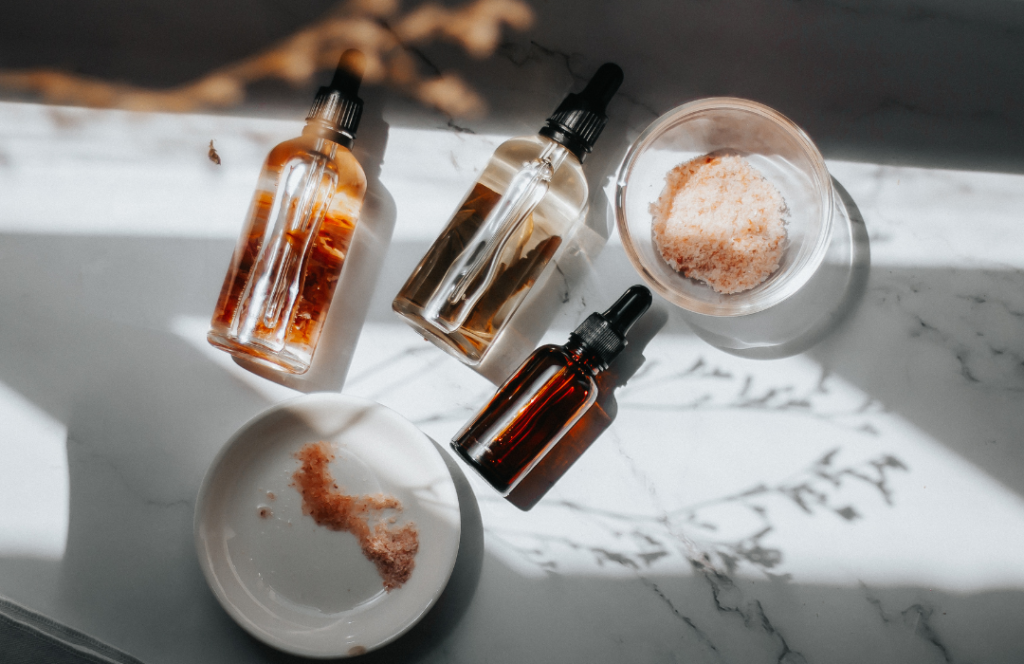
I’m totally into reading and watching reviews before I buy any skincare stuff. I mean, who doesn’t, right?
But here’s a little nugget of wisdom I’ve picked up – Just because those products work on someone else’s skin, doesn’t mean they’ll work on mine, and the same goes for you.
I’ve totally been there, buying all these products because of rave reviews, thinking they’ll be awesome.
Some of them turned out to be really bad for my skin or did absolutely nothing. It’s a bit of a rollercoaster, honestly.
And then there’s the flip side. I’ve found stuff that other people don’t really like, but for me, they’re fantastic. It’s kind of weird how that works, isn’t it?
So here’s my take: definitely read and watch those reviews – they’re super helpful. But remember, our skin is as individual as we are.
Don’t expect the same results on your own skin. You can always test or try samples – that’s been a game-changer for me.
In the end, it’s all about finding what works for you, through a bit of trial and error. So, keep an open mind and have fun experimenting.
Myth #2: The Higher the SPF, the Better
I used to be all in on this idea: “The Higher the SPF, the Better.” It’s a common belief, right?
You might think, like I did, that if SPF 30 is doing a good job, then SPF 100 must be doing an amazing job.
We tend to think more protection is always better, especially when it comes to guarding our skin against the sun.
But here’s something interesting I discovered, and it’s backed up by dermatologists. The truth is, after a certain point, the extra protection you get from super high SPFs isn’t as significant as you might think.
Dermatologists explain that SPF 30 blocks about 97% of UVB rays. When you step up to SPF 50, it goes up to 98%.
But when you go above SPF 50, the truth is, you’re not getting a whole lot more in terms of protection – it’s just a tiny bit more, which really doesn’t make a big difference.
You might be reaching for the highest SPF thinking it’s the best for your skin, just like I was. But understanding how SPF actually works can really shift your approach.
Dermatologists suggest that it’s not just about the SPF number, but also about how you use the sunscreen.
Now, I stick with SPFs between 30 and 50, just as many skin experts recommend. The key is in how you apply it – making sure it’s generous and reapplying as needed, especially if you’re spending a lot of time outdoors.
And remember, sunscreen is just part of the picture. You should also consider other sun protection measures like wearing hats, finding shade, and avoiding the sun during its strongest hours.
Myth #3: You Don’t Need Sunscreen on Cloudy Days
I’ve heard this one so many times, and it’s a huge misconception. A lot of people think that if it’s cloudy or rainy outside, they can skip the sunscreen.
But here’s what you really need to know: those sneaky UV rays don’t take a break just because the sun isn’t shining bright.
Even when it’s cloudy, UV radiation can still make its way through the clouds and reach your skin.
You might not feel the sun’s heat on a cloudy day, but that doesn’t mean you’re safe from its effects. This is exactly why so many dermatologists are always telling us to wear sunscreen every day, no matter the weather.
And it’s not just about being outside. If you’re near windows or indoors with some daylight coming in, those UV rays can still find you.
So, applying sunscreen should be a daily routine, just like brushing your teeth.
Related post: Everything You Need To Know About Why You Should Wear Sunscreen Everyday
Myth #4: Expensive Products Are Always Better
This is a big one in the skincare world. It’s easy to think that shelling out loads of cash on a skincare product means you’re getting the best of the best.
After all, higher price tags often bring to mind high-quality ingredients and advanced technology, right?
But here’s what you really need to consider: sometimes, what you’re paying for is the brand’s reputation, not necessarily a superior product.
Sure, many high-end products do use quality ingredients and advanced formulas, but that doesn’t mean less expensive options aren’t effective.
In fact, there are plenty of affordable skincare products out there that do an amazing job.
The key is to look at what’s in the product, not just the price or the fancy label. Check out the ingredients list.
Do some research to see if those ingredients are effective for your skin type and concerns.
Sometimes, you’ll find that a reasonably priced product has the same active ingredients as the pricier one.
Myth #5: You Don’t Need to Moisturize Oily Skin
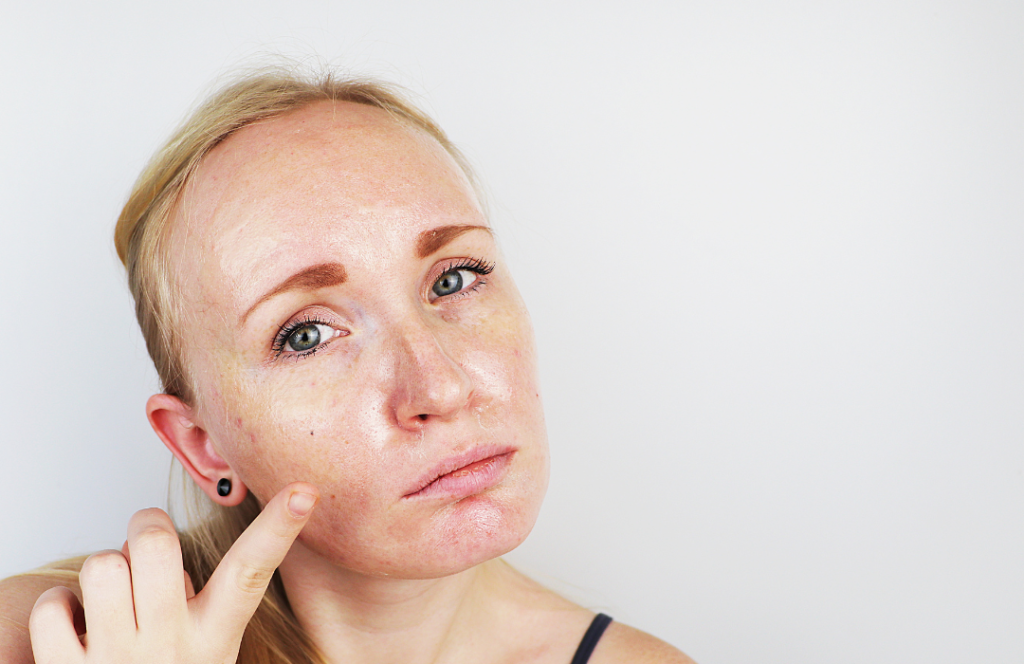
I used to have really oily skin, and I thought, “Why add more moisture to something that’s already greasy?”
But I was totally wrong about that.
It turns out, even oily skin needs moisture. When you skip the moisturizer, your skin might think it’s not getting enough hydration and compensate by producing even more oil.
It’s a never-ending cycle!
Moisturizing DOES help balance your skin’s natural oil production.
What’s really important is choosing the right kind of moisturizer. If you’ve got oily skin, look for lightweight, non-comedogenic options – these are designed not to clog your pores.
Gel-based moisturizers can be a great choice because they’re hydrating without being heavy.
By regularly moisturizing, you’re essentially signaling to your skin that it’s getting sufficient hydration. This understanding can gradually lead to a reduction in oiliness.
Myth #6: Pores Can Open and Close
You take a hot shower, and it feels like your pores are opening up. Then, you splash your face with cold water, and it seems like they’re snapping shut.
But pores don’t actually open and close like little doors on your skin.
Pores are simply small openings in the skin that don’t have the muscular mechanism to open or close. The idea that they can open and close is a common misconception.
What’s really happening is that heat can loosen the oils and debris in your pores, making it easier to clean them out, which gives the appearance of them ‘opening.’
On the other hand, cold water can cause the skin to tighten up a bit, giving the illusion of ‘closed’ pores.
Myth #7: The More You Exfoliate, the Better
When I first discovered exfoliators, they were a game changer – my skin felt super smooth and looked brighter. I got so excited that I started using them every day, even twice a day.
But my skin broke out, and I’m not talking about regular acne. I had these big, red spots all over. It hit me then – I was over-exfoliating.
Exfoliating is fantastic for removing dead skin cells and revealing fresh, bright skin. But just like anything good, there’s a limit.
Overdoing it can strip away your skin’s protective barrier, leading to irritation and breakouts.
Related post: 9 Clear Signs Your Skin Barrier Is Damaged And How To Fix It
It’s kind of like going to the gym and lifting weights. Sure, you see great results initially, but your muscles need rest to grow and strengthen.
The same goes for your skin.
After realizing my mistake, I stopped immediately. My skin needed time to heal and regain its balance. Now, I exfoliate just a couple of times a week, and my skin has never been happier.
So, my advice to you: exfoliate, but do it in moderation. It’s not about how often you do it, but doing it right. Listen to your skin, give it the care it needs, and remember, sometimes less is more.
Myth #8: Retinoids Can Thin Your Skin
Retinoids are known for their amazing anti-aging and skin-smoothing properties. But there’s this belief floating around that they thin your skin.
Retinoids actually work by promoting skin cell turnover and collagen production. This process can initially give the impression that your skin is getting thinner because it’s shedding the older, damaged layers more quickly.
But in reality, what’s happening is that these ingredients are helping to build a stronger, healthier skin foundation.
In the long run, retinoids can make your skin thicker and more resilient, thanks to the boost in collagen. Of course, it’s super important to use them correctly.
They can be potent, so starting with a lower concentration and gradually increasing it, as well as using sunscreen daily (since they can make your skin more sensitive to the sun), is key.
So, don’t shy away from retinol and retinoids thinking they’ll thin your skin. When used wisely, they’re fantastic tools in your skincare arsenal for healthier, more youthful-looking skin.
Myth #9: Makeup Causes Acne
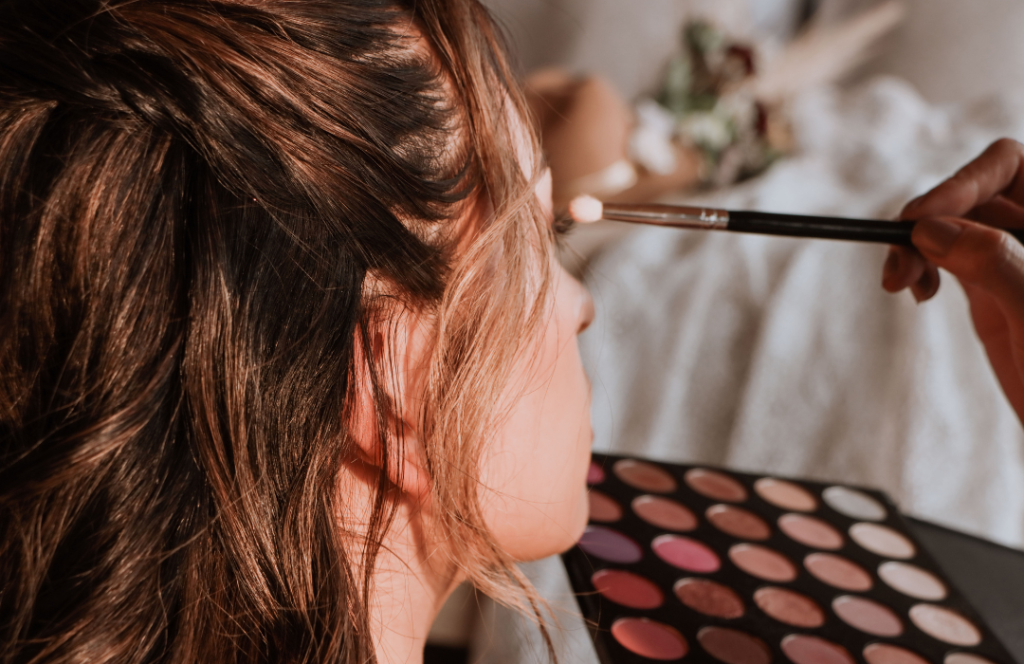
Makeup itself isn’t the root cause of acne. While it’s true that some ingredients in certain makeup products can contribute to breakouts, the main culprit is often not cleaning off the makeup properly.
When makeup is left on the skin, especially overnight, it can mix with the natural oils and dirt on your skin’s surface, potentially clogging pores and leading to acne. That’s why proper makeup removal is key to keeping your skin clear.
I highly recommend trying double cleansing. It’s a game-changer!
First, use an oil-based cleanser to break down the makeup, and then follow up with a water-based cleanser to clean your skin thoroughly.
And if you’re someone who wears heavy makeup, you might want to consider triple cleansing on those days. Start with a micellar water to remove the surface layer of makeup before diving into your double cleanse routine.
Related post: Double Cleansing: The Secret Weapon Against Breakouts And Pollution
Myth #10: Higher Concentrations of Ingredients Are Better
This myth is all about the idea that if a little is good, a lot must be better, right? Especially when it comes to active ingredients in skincare.
But, as I’ve learned, this isn’t always the case. The key isn’t about high or low concentrations; it’s about finding the right concentration that works for your skin.
Take retinol, for example. It’s a powerhouse ingredient known for its anti-aging and skin-smoothing benefits.
But if you’re just starting to use retinol, jumping straight to the highest strength isn’t the best move.
In fact, it can do more harm than good. High concentrations can be too intense for beginners, leading to irritation, redness, and peeling.
It’s much better to start with a lower concentration of retinol and let your skin adjust gradually. Over time, you can increase the strength if needed.
This approach reduces the risk of irritation and helps your skin reap the benefits of skincare products without the backlash.
Myth #11: Skin Care Products Work Better When Used in Larger Amounts
I’ve been there, thinking if a little moisturizer is good, then a lot must be great.
I used to slather on heaps of moisturizer, believing that the more I used, the softer and more hydrated my skin would be.
But more isn’t always better when it comes to how much product you use.
Using too much of certain products, like moisturizers, can lead to issues. In my case, I ended up with small whitehead pimples – a sign that my skin was getting too much moisture.
What was happening was that the excess product wasn’t able to absorb properly into my skin, leading to clogged pores and breakouts.
The truth is, skincare products are formulated to work effectively in certain quantities.
Using more than recommended doesn’t boost their effectiveness; it can actually throw your skin off balance.
For instance, a pea-sized amount of a potent product like retinol is usually enough. Overdoing it can cause irritation and other skin problems.
Myth #12: If a Product Causes Breakouts, It’s Not Working
You try a new skincare product and suddenly, you’re breaking out. It’s tempting to think that the product isn’t working for you.
But here’s something you might not know. When you introduce your skin to a new product, especially ones with active ingredients like acids or retinoids, you might go through what’s known as ‘purging.’
It’s when these ingredients increase cell turnover, causing your skin to bring impurities to the surface more quickly. This can look like a breakout, but it’s actually a sign that the product is doing its job.
It’s crucial for you to understand that this doesn’t always mean the product is harmful or ineffective.
It might just mean your skin is adjusting. However, you should be aware of the difference between purging and an actual adverse reaction.
If you keep breaking out for a long time, or if the breakouts are severe, or you’re feeling significant discomfort, it’s important to stop using the product and maybe check with a dermatologist.
Related post: Skin Purging Vs Breakouts: Unmasking The Truth Behind Your Blemishes
Myth #13: All Alcohol in Skincare is Bad
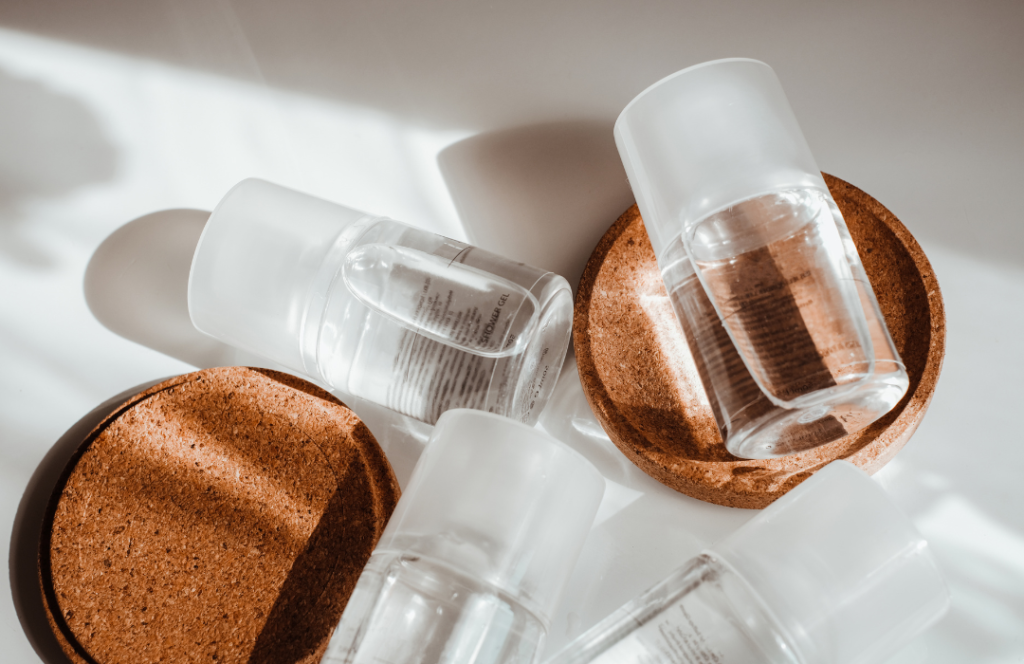
We often hear that alcohol in skincare products is a no-go because it dries out your skin. But it’s not that straightforward.
There are different types of alcohol used in skincare, and they’re not all bad.
In fact, some alcohols, like cetyl, stearyl, and cetearyl alcohol, are actually good for your skin. These are known as fatty alcohols, and they’re totally different from the drying alcohols you might be thinking of.
Fatty alcohols are moisturizing, they help to keep products stable, and they make creams and lotions feel smooth and luxurious.
On the other hand, simple alcohols like denatured alcohol or isopropyl alcohol can be drying, especially if they’re high up on the ingredients list.
These types of alcohols are commonly included in skincare products to give them a quick-absorbing, lightweight feel on the skin. They’re usually found in small amounts, and not everyone’s skin reacts negatively to them.
You can read labels and know what type of alcohol is in your product. If it’s a fatty alcohol, you’re likely good to go, especially if you have dry or sensitive skin.
But if it’s a simple alcohol and you’re prone to dryness or irritation, you might want to be cautious.
Myth #14: Chocolate and Greasy Foods Cause Acne
Growing up, you might have heard, just like I did, “Don’t eat too much chocolate or those greasy fries, or you’ll end up with a face full of pimples.”
But the connection between diet and acne isn’t as straightforward as we’ve been led to believe.
First off, acne is generally caused by factors like hormones, bacteria, and how much oil your skin produces. So, it’s not as simple as blaming chocolate or your favorite fast food.
There’s no solid evidence that directly points to these foods as the culprits for acne.
However, and this is an important point, if you’re dealing with severe acne, it might be a good idea to watch your intake of chocolates that are high in milk and sugar, as well as overly greasy foods.
While they’re not the direct cause, they could potentially contribute to or aggravate your skin condition.
Remember, everyone’s body reacts differently. Some people might find that their skin is more prone to breakouts with certain foods, while others don’t see any change.
The key is paying attention to how your body responds.
Myth #15: You Don’t Need a Separate Eye Cream
I know a lot of people who think eye creams are just a marketing gimmick. Some believe you don’t need them at all, or at least not until you start seeing signs of aging around your eyes.
Do you know the skin around our eyes is actually quite different from the rest of our face? It’s thinner and more delicate, which means it can be more prone to dryness, dark circles, and signs of aging like fine lines and wrinkles.
Regular facial moisturizers are great, but they might not be tailored to address these specific concerns.
Eye creams are formulated to target the unique needs of the eye area. They’re often gentler, have specific ingredients for issues like puffiness or dark circles, and can provide the right level of hydration without being too heavy.
Whether you need an eye cream can depend on various factors like your skin type, age, and specific concerns.
But it’s not just about waiting until you see aging signs. Using an eye cream can also be about prevention and giving that delicate area a bit of extra care.
Related post: Does Eye Cream Actually Work?
Myth #16: You Should Choose Skincare Products Based on Your Age
A few years back, I remember watching YouTube videos and influencers saying that you need to start using products like retinol after you hit 25.
But after digging into articles and listening to dermatologists, I found out that this isn’t necessarily the case.
The truth is, skincare isn’t a one-size-fits-all approach based on age. It’s more about your skin’s needs and how it’s behaving.
For instance, with retinol – known for its anti-aging and skin-renewing properties – the idea was to start using it in your mid-twenties.
However, dermatologists now say you can actually start incorporating it into your routine in your early twenties, or even earlier, depending on your skin concerns.
I started using retinol when I was around 20-21, and it wasn’t about anti-aging for me. It was more about dealing with issues like texture and acne. And it worked really well for my skin.
So, when it comes to choosing skincare products, don’t just go by your age.
Think about what your skin is currently needing. Are you dealing with acne, dryness, texture issues, or wanting to start early on preventive care?
Your skin’s condition and concerns are what should guide your skincare choices, not just the number of birthdays you’ve celebrated.
Myth #17: Skincare Stops Working Because Your Skin Gets Used to It
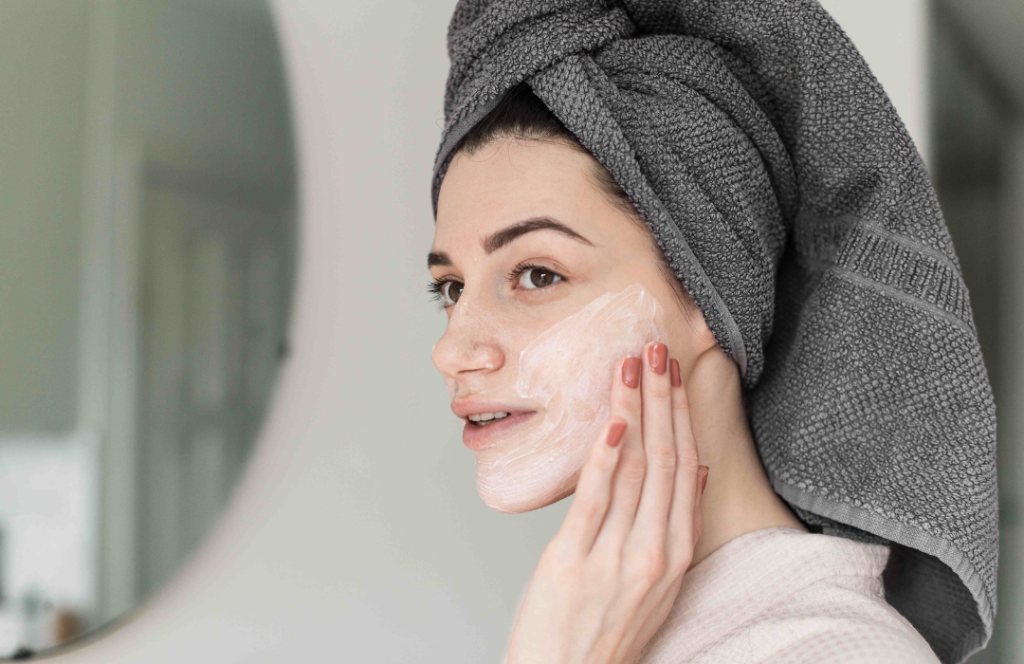
If a product contains beneficial ingredients, it should continue to benefit your skin. The reason it might seem like a product stops working could be due to various other factors.
Your skin’s needs can change over time due to factors like age, environment, diet, and hormonal fluctuations.
So, what worked wonderfully a few months ago might not be what your skin needs right now.
Also, if you’re using products to address a specific issue like acne or pigmentation, once the issue improves, the dramatic results you initially saw might become less noticeable.
But that doesn’t mean the product isn’t working; it’s just that your skin has improved.
If you’re worried your skin might be getting too accustomed to a product, you can try taking a short break from it.
Pause using the product for a couple of weeks, then reintroduce it into your routine. This can help you gauge whether it’s still effective for your skin’s current condition.
Myth #18: Skincare Can Help with Most Skin Problems
I’ve been down this road, and it took me quite a while to understand the reality behind this myth.
When I experienced the worst breakout of my life (you can check out my story for all the details), I dove headfirst into the world of skincare.
I was constantly reading blogs, watching countless videos, and even buying every product that was recommended.
But what I was missing is that my lifestyle at that time was far from skin-friendly. I loved spicy food and milk tea, regularly stayed up until 2-3 AM, never really exercised, and was pretty much a stress magnet.
And guess what? Even the most expensive and highly recommended skincare products couldn’t combat the effects of these habits.
This experience taught me a valuable lesson: skincare is just one part of the equation. It’s important, yes, but it’s not a magical fix for all skin issues.
The food you eat, the amount of sleep you get, your stress levels, and how much you move your body – all these play a massive role in your skin’s health.
If you’re struggling with skin issues, while it’s great to find the right skincare products, it’s equally important to look at your overall lifestyle.
Adjusting your diet, ensuring you get enough sleep, managing stress, and incorporating some form of physical activity can make a world of difference to your skin.
Myth #19: Blackheads Are Dirt Trapped in Pores
This is a common misconception that I used to believe as well!!
Blackheads are those pesky little spots that can appear on your skin, often on the nose or chin, and they look like tiny black dots.
It’s easy to assume that they’re caused by dirt clogging up your pores, but the truth is a bit more complex.
Blackheads are actually a type of acne, and their dark appearance isn’t due to dirt. Instead, it’s caused by a combination of oil (sebum) and dead skin cells that get trapped in hair follicles. When this mixture oxidizes and comes into contact with air, it turns black.
So, it’s not about poor hygiene or dirt on your skin. It’s more about your skin’s natural processes and factors like excess oil production, genetics, and the use of certain skincare products.
Myth #20: Lemon Juice Is a Good Natural Brightener for Skin
This myth has been around for a while, and you might have come across it in DIY skincare remedies.
The idea is that lemon juice, with its natural acidity and vitamin C content, can brighten and lighten your skin.
The reality is lemon juice, while containing vitamin C, is also highly acidic. Applying it directly to your skin can be too harsh and may lead to irritation, redness, or even increased sensitivity to the sun.
Think about it this way, if plain lemon juice were a miracle worker for brightening our skin, why do so many people invest hundreds of dollars in high-quality vitamin C serums from brands like Skinceuticals and Obagi?
These serums are formulated to deliver the brightening benefits of vitamin C safely and effectively, without the risks associated with using pure lemon juice.
So, when it comes to brightening your skin, consider using skincare products specifically designed for the job. They’re not only safer but also more likely to provide consistent and reliable results.
Myth #21: You Can Use the Same Skincare Routine All Year Round
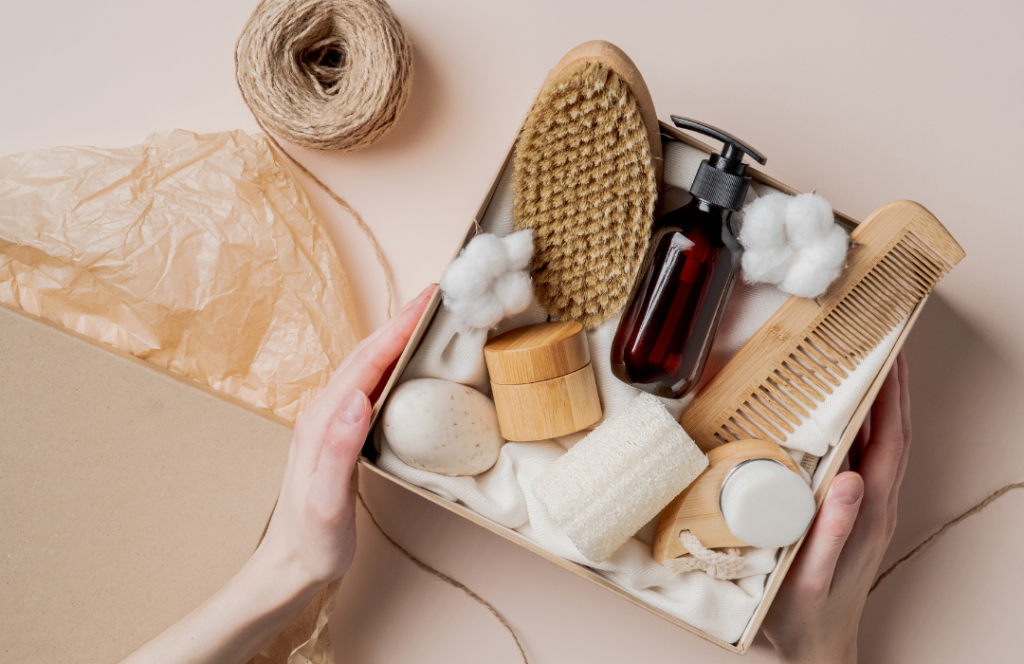
Many think that what works for their skin in one season will work just as well in all the others.
But here’s the truth: your skin’s needs can change with the seasons.
For example, in the winter, the air tends to be drier, which can lead to increased skin dryness and sensitivity. So, using heavier moisturizers and hydrating products might be necessary.
On the other hand, during the summer, you might deal with more oiliness and the need for lighter, oil-free products.
It’s also important to consider environmental factors. If you live in a place with harsh winters or hot, humid summers, these conditions can affect your skin’s behavior.
And let’s not forget the importance of sunscreen, which should be a year-round staple but is especially vital in the sunnier months.
Myth #22: You Can Remove Pimples by Popping Them
I’ve seen many of my friends try to pop their pimples without much knowledge about proper hygiene. Unfortunately, this can lead to some serious consequences, like those dreaded acne scars.
Popping pimples isn’t a good approach. When you squeeze a pimple, you can push bacteria and debris deeper into your skin, making the situation worse.
It can also cause inflammation and potential scarring. Plus, you’re increasing the risk of introducing infection to the area.
So, please don’t pop your pimples but treat them with topical acne treatments containing ingredients like benzoyl peroxide or salicylic acid.
If you’re unsure about how to manage your acne, consider consulting a dermatologist.
They can provide expert guidance and treatments to help you clear up your skin without the risk of scarring.
Myth #23: Only Teenagers Get Acne
This is a big misconception because, well, I’m living proof. When I was a teenager, my skin was mostly clear. But when I hit my early twenties, bam, I got hit with some really bad acne all over my face.
See, acne doesn’t care how old you are. It can show up whenever it feels like it. It’s not just about age; it’s about a bunch of things, like your body’s stuff (hormones), how you live your life, and the stuff you put on your face.
So, if you’re dealing with acne and you’re not a teenager anymore, don’t worry, you’re not alone. Lots of grown-ups deal with this too. And the good news is, there are things you can do to help your skin get better.
So, don’t let this myth trick you – acne can happen to anyone, at any time.
Myth #24: Products Marketed as ‘For All Skin Types’ Are Suitable for Everyone
Our skin is like a unique fingerprint, and what works for one person might not work for another.
So, even if a product claims to be a one-size-fits-all solution, it might not be suitable for your specific skin needs.
It’s crucial to understand your skin type (whether it’s oily, dry, sensitive, or combination) and any specific concerns you have (like acne, aging, or pigmentation). Then, choose products that are tailored to address those needs.
Myth #25: SPF in Makeup Is Enough for Sun Protection
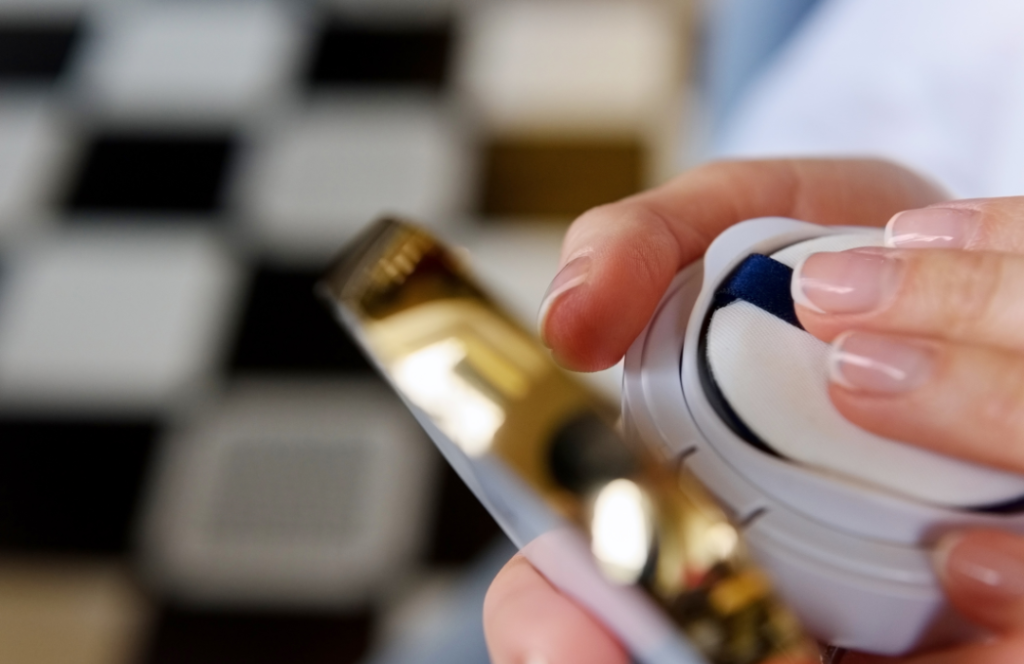
While some makeup products boast about having SPF (sun protection factor), it’s essential to know that relying solely on the SPF in your makeup isn’t sufficient to shield your skin from the sun’s harmful rays.
The SPF in makeup is often lower than what dermatologists recommend for adequate sun protection.
You really need at least SPF 30 for daily use to safeguard your skin effectively. However, most makeup products contain SPF 15 or even lower.
Moreover, makeup doesn’t cover your entire face and neck evenly. Even if you apply foundation or concealer diligently, some areas will still be exposed to the sun.
To ensure that you’re adequately protected, it’s crucial to apply a dedicated broad-spectrum sunscreen before applying any makeup. This extra step creates a protective barrier that shields your skin from the sun’s UV rays.
So, please don’t fall into the trap of relying solely on the SPF in your makeup.
Always use a separate sunscreen to give your skin the protection it needs, whether it’s a sunny day or you’re spending most of your time indoors.
More About Skincare Topics:
Face Oil Vs. Moisturizer: Which One Is Better For Your Skin?





